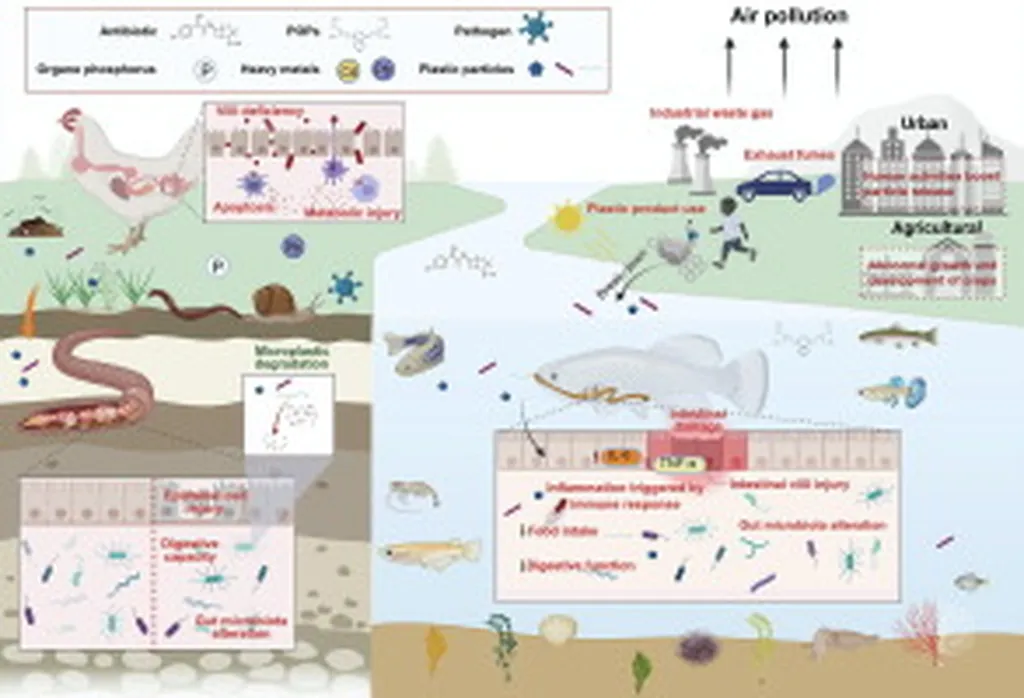In the heart of China’s Heilongjiang province, researchers are uncovering innovative ways to combat a growing threat to global agriculture: microplastic pollution. Dr. Jia Liu, a leading scientist at the Northeast Institute of Geography and Agroecology, Chinese Academy of Sciences, has published a groundbreaking study in the journal *Ecotoxicology and Environmental Safety* (translated as “Environmental Safety and Ecotoxicology”), revealing how traditional zinc fertilizers can enhance rice seedlings’ tolerance to microplastic stress. This research not only sheds light on the mechanisms behind microplastic toxicity but also offers a sustainable alternative to more controversial nanotechnology-based solutions.
Microplastics, tiny fragments of plastic less than five millimeters in size, are pervasive in our environment and pose significant risks to agricultural productivity. Dr. Liu’s study demonstrates that exposure to polystyrene microplastics inhibits rice seedling growth, impairs photosynthesis, and induces oxidative stress, ultimately disrupting the plants’ metabolism. “The damage caused by microplastics is profound,” Dr. Liu explains. “It’s not just about the visible effects on growth; the metabolic disruptions can have long-term consequences for crop yield and quality.”
However, the study also provides a glimmer of hope. By treating rice seedlings with zinc sulfate (ZnSO₄), a traditional zinc fertilizer, Dr. Liu and her team observed a significant alleviation of microplastic-induced stress. The mechanisms behind this protective effect are complex and organ-specific. In the shoots, zinc optimizes nitrogen metabolism, restoring photosynthesis and promoting growth. In the roots, it regulates carbon metabolism, reducing reactive oxygen species (ROS) and enhancing development.
The implications of this research extend far beyond the rice paddies of China. As microplastic pollution continues to escalate, finding sustainable and effective mitigation strategies is crucial for global food security. Dr. Liu’s work suggests that optimizing the use of traditional zinc fertilizers could be a viable solution, reducing the need for more controversial nanotechnology-based approaches like zinc oxide nanoparticles (ZnO NPs).
For the energy sector, this research highlights the importance of integrating environmental considerations into agricultural practices. As the world grapples with the challenges of climate change and resource depletion, developing sustainable and resilient agricultural systems is more critical than ever. Dr. Liu’s findings offer a promising avenue for achieving this goal, demonstrating how traditional agricultural practices can be optimized to combat emerging environmental threats.
Moreover, this research underscores the need for further investigation into the interactions between microplastics and essential plant nutrients. As Dr. Liu notes, “Our study is just the beginning. There’s still much we don’t understand about how microplastics interact with plants and the broader environment.” By unraveling these complex interactions, researchers can develop more targeted and effective strategies for mitigating microplastic pollution and its impacts on agriculture.
In the face of growing environmental challenges, Dr. Liu’s work serves as a reminder of the power of innovative thinking and interdisciplinary research. By bridging the gap between traditional agricultural practices and cutting-edge environmental science, she and her team are paving the way for a more sustainable and resilient future. As the world continues to grapple with the complexities of microplastic pollution, their findings offer a beacon of hope, demonstrating that even in the face of daunting challenges, sustainable solutions are within reach.

